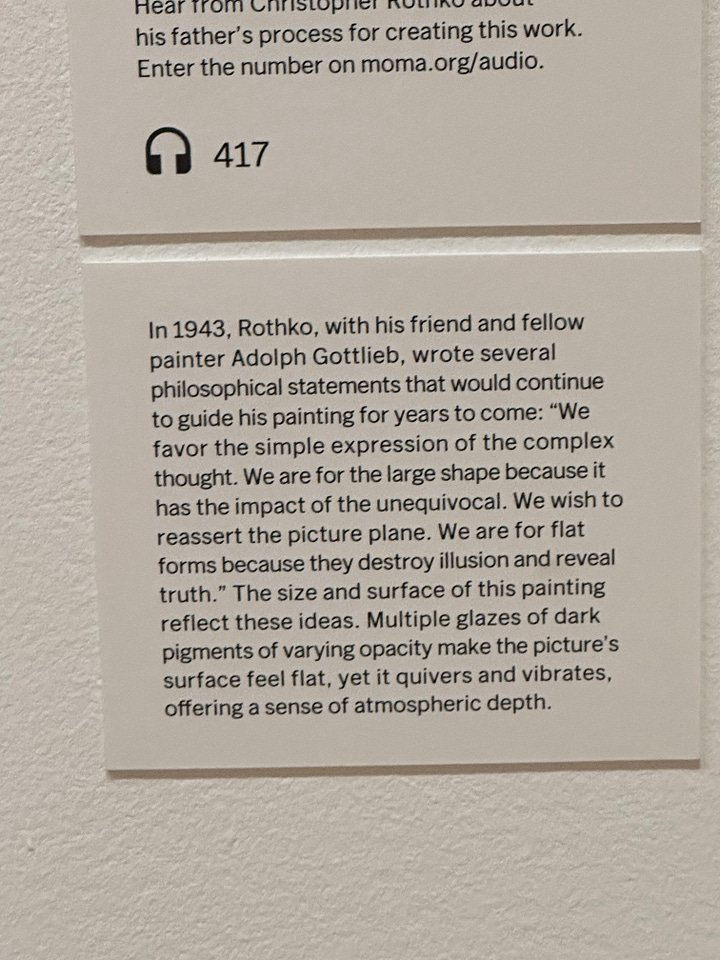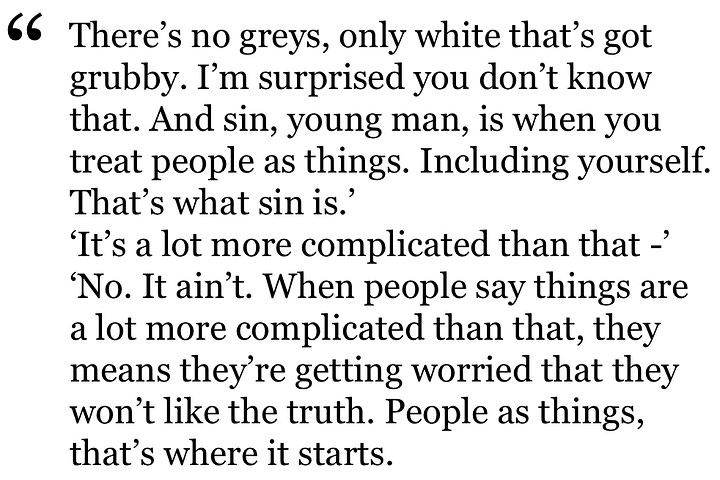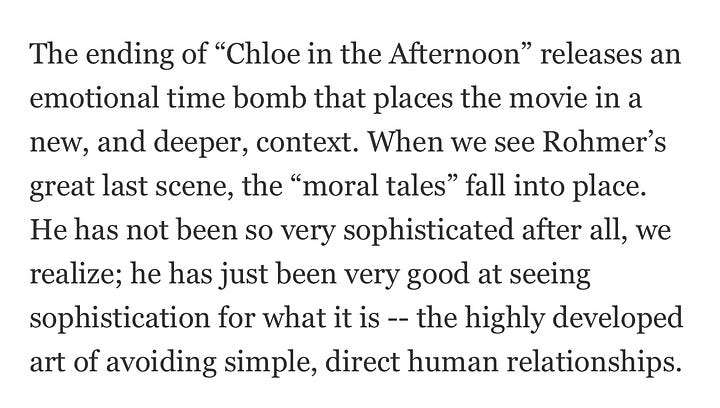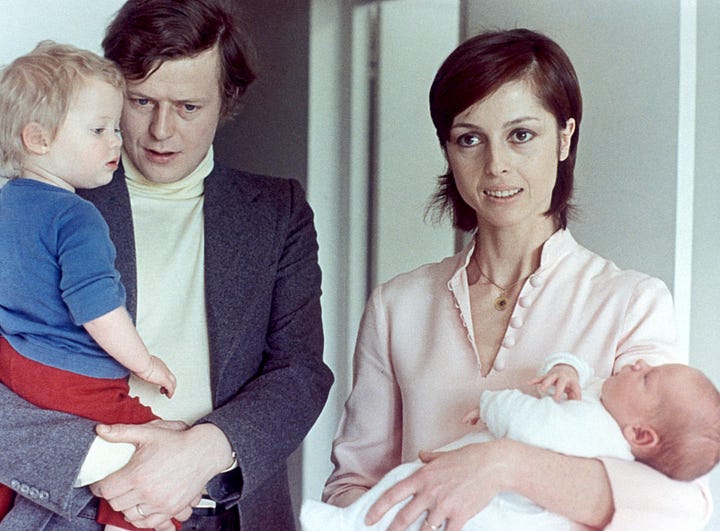ok i’m back.
twitter is obviously causing extended soul rot and perpetuating a sour spirit in me. self-awareness isn’t helping. it has to end!!
***
My number one piece of practical dating advice is to never plan a museum first date, especially if it’s a major big-time art museum. There are too many distractions around to allow you to be present with your date and there will be great pressure on you to provide insight and entertainment, whether or not your date is a regular museum-goer. If it’s a big maze-like major museum, the likelihood that you’ll get stuck and lost and will not be able to make a quick exit in case of disaster is enormous. A burdensome museum date will also surely sour your perception of any future museum experiences, which is unconscionable. Finally, most importantly, (and I don’t think I’m overstepping bounds in this warning to my sensitive and genteel audience) the intimacy that an art museum can catalyze is best reserved for the safety of a loving relationship. NOT a first date!!! I tell you this from experience.
I finally went to the MoMA for the first time since the torturous three-hour date I had there during my 2021 post-covid dating hot streak. Not to complain. He had waved his hand at all the abstract expressionism and laughed, asking me why they spent time making and preserving art instead of “dying in wars”. Which was funny because (as my bf pointed out) making art didn’t prevent most of those men from dying in wars anyway. When my Uber arrived, he forced a kiss and then screamed at the driver “sorry for the show!” before walking off. Horrifying!! Good riddance!!!
The Uber sped me up Manhattan to the Met where I went on ANOTHER three-hour date with someone who I believe may have been an online eco-fascist. Or maybe just a garden-variety BAP and Peat freak. I didn’t know enough to know the difference at the time, but the vibes were off for sure. He told me he was banned from Hinge and soon I learned why. Fortunately, he didn’t expect me to know anything about the art. He didn’t expect a woman to know very much at all. The next day I woke up covid positive and haven’t seen either of them since.1
Several months later I was asked to go on a date at the Phillips Collection in DC. The Phillips Collection is classy. Very much a doable first date. One of the few exceptions to my rule. I was excited to bounce back from the New York museum date scene. This time, my date (extremely polite, pleasant, put-together) asked me what I thought of the Rothko room, but I had nothing to say about those big splotches except “did you know they were CIA-funded?”. He stared at me blankly and was like “very powerful forms”. I felt I had missed an opportunity to seem insightful. Horrible.
But that was the old me. I finally returned to the MoMA last month, self-actualized, on the arm of a genuine angel boyfriend. A self-motivated museum-goer. Not our first date. He helpfully told me you can’t interpret a Rothko until you’ve let the emotions well up in you organically after sitting and looking at it for at least thirty minutes. I gave it five or six. I thought this Rothko was about repressed suffering. The thin black strip at the top represented despair - looming over but kept at bay - and the red block in the middle was anger, and the largest brown block at the bottom was the dominant feeling: confusion. The plaques at the MoMA are better written than the ones at the Whitney. I looked at the one by the Rothko after, to see if I was right about my interpretation. It had nothing to say directly about the piece itself but validated me anyway (see the first picture in the gallery below).
That evening, my boyfriend and I watched Rohmer’s Love in the Afternoon and I read Roger Ebert’s review of it which touched me in the same way. Maybe you could call Rothko lazy, or Rohmer patronizing, or both rigid and trite. But I love sincere expression and any attempt at it. I believe there is virtue in clarity and vice in confusion.
I wonder what the difference is between trite cliche and simple truth. They can look the same on the surface. I wonder why simple truth is most readily digested when it’s been given some subtle dressing, wrapped up like a pill in peanut butter. When we’re told this is not cliche, don’t even think about this being cliche! Jump through these hoops first! Then read it again. How smart you are for coming to this austere conclusion after all those convulsions! Or, instead of hoop-jumping, we like to accept the truth bitterly after illusion has been violently stripped away. The best art enacts either of these mechanisms, I think. But why do we need it to? Even if we accept that unvarnished truth is the highest aim, why can’t we accept the truth served straight? Why do we distrust the simple and respect a veneer of sophistication, why can’t we accept the present reality and the part we’ve played in it without laughing or sneering or flagellating or filigreeing or otherwise distancing ourselves? I thought of this verse, which I will quote here, but please run the obstacle course in your mind and imagine I am quoting it in a profound and impactful way and not platitudinously:
At that time Jesus answered and said, I thank thee, O Father, Lord of heaven and earth, because thou hast hid these things from the wise and prudent, and hast revealed them unto babes.
Anyway, only this last, most recent MoMA date made me think of these things, which proves my point, that - as with other forms of intimacy - museum dates must be delayed as long as possible.




Can you imagine though? A SIX HOUR back-to-back museum date stretch? The MoMA AND the Met? With a finance bro and a fascist?? In the depths of December??? That’s how you know I had lockdown brain rot. Now you understand why I’m so unhinged on Twitter. It’s literally a miracle I’m still heterosexual.




Easy to stay interested in such an insightful piece. "The plaques at the MoMA are better written than the ones at the Whitney." This is an interesting insight. I wonder why?
Fave post.